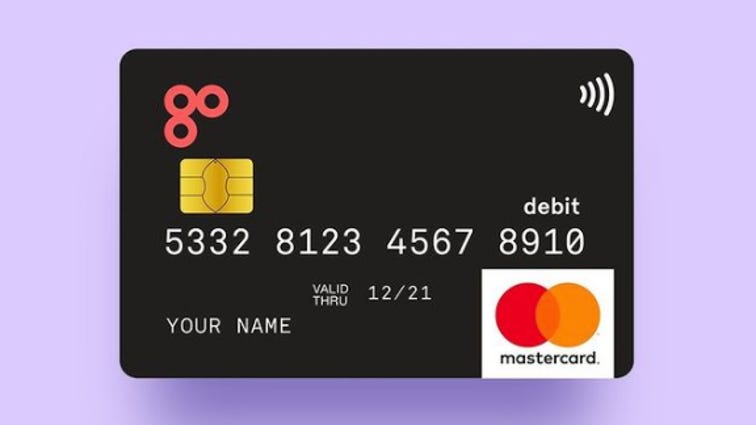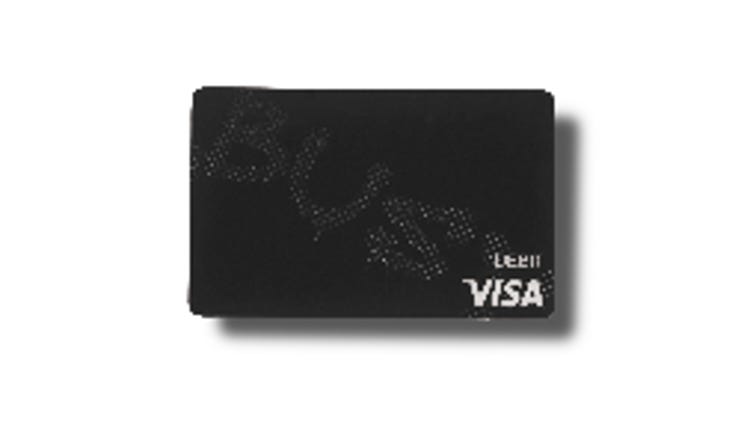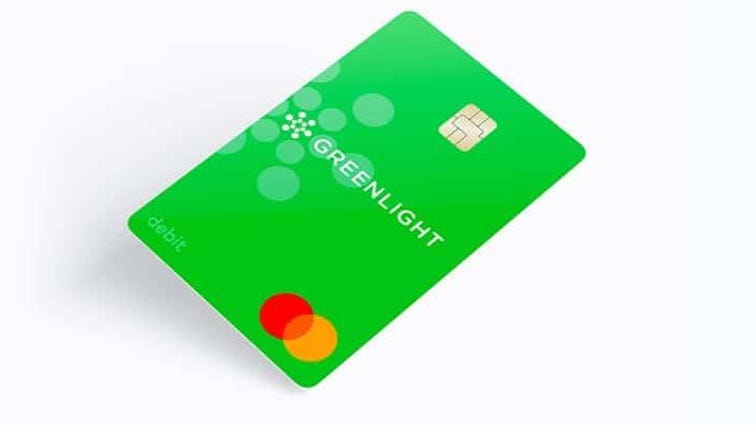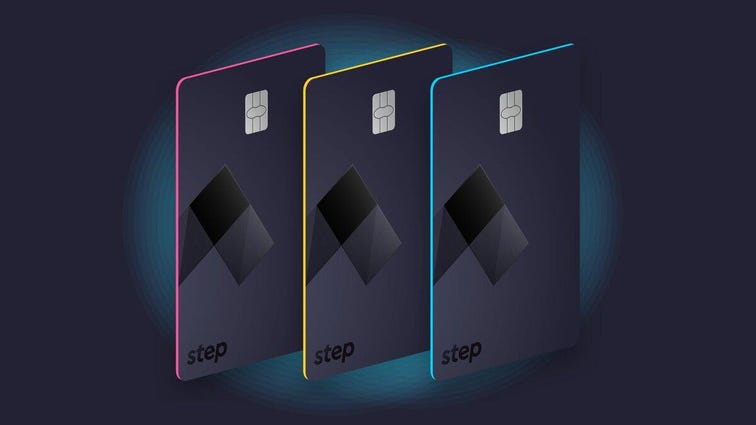Today, digital technology permeates our kids’ lives. It’s a change that hit me the first time I watched my son navigate a phone. Kids — even toddlers — love being online. And money has become a huge part of their digital worlds.
Since the onset of the COVID-19 pandemic in particular, our culture has cultivated an environment that entices kids to spend more and more time on the internet. Yes, for entertainment such as streaming services and video games. But also for other parts of life, like allowances, saving and spending money. As such, kids are angling for virtual access to their cash at younger ages than ever before. And the $535 million fintech-for-kids industry is happily serving up youth-focused prepaid debit cards, bank accounts and investment accounts.
As many parents will attest, signing your child up for anything on the internet can be a thorny proposition. Although technology opens up new worlds of ideas and learning opportunities, there are downsides. And sharing your child’s personal information online puts them at risk of identity theft and a host of other perils. With banking apps for kids, it’s not only the app or company you use that ends up with your child’s personal data; it’s the companies they sell data to — a common (and legal) industry practice.
When choosing a good app to teach your kids about financial responsibility, it’s vital to protect your family’s personal and financial information. Read on to learn more about how to choose the right debit card to keep everyone safe.
Debit cards for kids: A growth opportunity
Financial literacy begins surprisingly early. Most children recognize the value of money by age 7, according to a University of Cambridge study, including how it is earned and exchanged for goods. The study also found that although kids grasp basic money concepts at a young age, they’re still processing the difference between luxuries and necessities. (Many adults struggle with this, too: a budgeting app can help.)
Opening a prepaid debit card in your child’s name gives them an opportunity for hands-on experience under your guidance. Younger kids will do well with a prepaid debit card; older kids may be ready for an entry-level checking account with debit capabilities. Either way, as the custodian, you’ll need to open an account on their behalf and link it to your bank account. Afterward, you can transfer money to their card. Most cards and accounts feature modern tools to help you instill positive money habits, including:
- Tracking how and when your child spends their money
- Assigning and rewarding completed chores with a debited allowance
- Saving and investing tools that suggest ways to grow their earnings
The risks: Are debit cards for kids safe?
New technology always presents risks — especially when kids are involved. According to a Pew Research survey, two-thirds of parents believe that raising kids is more challenging than 20 years ago, precisely because of technology.
And it’s not just screen time that raises concerns. According to a 2018 study by Javelin Strategy & Research, more than one million children were victims of identity theft in 2017, at an estimated cost of $2.67 billion. More than 80% of them were 12 years or younger. More recently, the Identity Theft Resource Center has received numerous reports of personal information breaches stemming from COVID-19-related stimulus claims. In one case, a 2-year-old’s identity was stolen and used to claim benefits.
Though that was not the fault of the financial industry, the banks do play a role in the problem. Data mining has become a valuable resource for businesses, and financial corporations have shown that they are more than willing to sell customer data. As such, the burden ultimately falls to those very customers to monitor and protect their own — and their kids’ — data.
Weighing the benefits and risks of a debit card for your child is a balancing act. The main thing to consider is how much you’re comfortable sharing online. While every issuer is different, you’ll need to provide identifying information about yourself and your child to sign up, including birthdates, Social Security numbers, address and phone number. The company may also ask you to share your GPS location history, purchase history and behavioral profile — information that may allow the app to share targeted ads for products and services. That said, debit cards for kids are no more risky than their adult counterparts for a few reasons:
- Child-specific laws: The Children’s Online Privacy Protection Act takes privacy a step further for children under 13 who use banking products by requiring issuers to clearly outline what information they’re collecting and get parental consent beforehand. Pay close attention to whether the issuer intends to sell your child’s data to third parties.
- Purchase protection: If your child’s card is lost or stolen, some issuers offer refunds for fraudulent purchases — for an additional fee. Greenlight’s Max plan provides purchase protection for an extra $5 per month.
- Card security: Prepaid cards are equipped with EMV chip technology and password-protected accounts that require a PIN or facial recognition to access the account.
- Locking capability: Most debit cards for kids come with a parental locking feature that allows you to protect the cash in the account through your app if the card is lost.
- Consumer protection: Unlike cash that can easily fall out of your child’s pocket, prepaid debit cards issued by FDIC-insured banks protect up to $250,000, meaning that you won’t lose the money in your account if the bank fails.
Although the same security measures protect kid and adult debit cards, it bears repeating that any information you share about your child online increases their risk profile. Online data breaches have exposed massive numbers of accounts, which often contain sensitive information, including social security numbers, addresses, phone numbers and credit card numbers.
After signing your child up for a debit card, look for bills or credit card applications addressed to them and ask questions if a debt collector calls with their name on file. The Federal Trade Commission outlines steps to take if you suspect identity theft and Experian offers a free ID Scan service to see whether your child’s SSN is active on any credit accounts.
5 debit cards for kids worth considering
There are nearly 100 cards, apps and accounts designed for kids. We haven’t reviewed all of them but have selected a few worth highlighting here.

 \n ","topic":"","ttag":"","variant":"","viewguid":"","event":"listicle|image|1","correlationId":"","_destCat":"https:\/\/gohenry-us.pxf.io\/c\/159047\/513304\/8772","productName":"GoHenry","formatType":"IMAGE","location":"LIST","position":1,"sku":"","dwLinkTag":"article-body|listicle|image","selector":"#article-body #listicle-62d98ae0-bbc2-4721-b652-c05b054f7ee7 .itemImage"}}” rel=”noopener nofollow” target=”_blank”>
\n ","topic":"","ttag":"","variant":"","viewguid":"","event":"listicle|image|1","correlationId":"","_destCat":"https:\/\/gohenry-us.pxf.io\/c\/159047\/513304\/8772","productName":"GoHenry","formatType":"IMAGE","location":"LIST","position":1,"sku":"","dwLinkTag":"article-body|listicle|image","selector":"#article-body #listicle-62d98ae0-bbc2-4721-b652-c05b054f7ee7 .itemImage"}}” rel=”noopener nofollow” target=”_blank”>


GoHenry
- Minimum age: 6
- Monthly fee: $4 per child
- Free trial: 1 month
- ATM fee: $1.50 per transaction
- Purchase fees: None
After assessing the field, I settled on GoHenry for my 6-year-old son. Known for its personalized cards and customizable tasks like specific chores and savings goals, it’s a good choice for parents who want to help younger kids take on more household responsibilities and pay them for a job well done. What I really like: the company’s policy clearly states that they don’t sell your — or your kids’ — personal information to third parties without your permission. So far, my kiddo is halfway to earning the latest Lego Super Mario set and he’s never been happier to fold laundry.

 \n ","topic":"","ttag":"","variant":"","viewguid":"","event":"listicle|image|2","correlationId":"","_destCat":"https:\/\/busykid.com\/","productName":"BusyKid","formatType":"IMAGE","location":"LIST","position":2,"sku":"","dwLinkTag":"article-body|listicle|image","selector":"#article-body #listicle-689ff873-c828-4038-a10b-bdb91046ac19 .itemImage"}}” rel=”noopener nofollow” target=”_blank”>
\n ","topic":"","ttag":"","variant":"","viewguid":"","event":"listicle|image|2","correlationId":"","_destCat":"https:\/\/busykid.com\/","productName":"BusyKid","formatType":"IMAGE","location":"LIST","position":2,"sku":"","dwLinkTag":"article-body|listicle|image","selector":"#article-body #listicle-689ff873-c828-4038-a10b-bdb91046ac19 .itemImage"}}” rel=”noopener nofollow” target=”_blank”>


BusyKid
- Minimum age: None
- Monthly fee: $1.67 per month, unlimited children
- Free trial: 1 month
- ATM fee: None
- Purchase fees: None
As the most affordable paid option on our list, the BusyKid Visa Prepaid Debit Card is an excellent resource for parents interested in teaching their kids how to grow their savings. Kids have the option of keeping cash in a savings account, investing it in individual stocks or donating it to charitable causes. BusyKid acknowledges that it collects user information to target ads inside the app, and the company may share parents’ data with partners for marketing purposes. However, it clarifies its position by stating that this practice applies to parents only, and “the personal information we collect about children is not made publicly available or otherwise shared, except as otherwise described in this Privacy Policy.”
At the time of publication, no conflicting description exists on BusyKid’s website.

 \n ","topic":"","ttag":"","variant":"","viewguid":"","event":"listicle|image|3","correlationId":"","_destCat":"https:\/\/oc.brcclx.com\/t\/?lid=26681068&cr=28695&last_updated=1602102964","productName":"Greenlight","formatType":"IMAGE","location":"LIST","position":3,"sku":"","dwLinkTag":"article-body|listicle|image","selector":"#article-body #listicle-3e23eb57-b1d2-469e-b738-d13e8d26d990 .itemImage"}}” rel=”noopener nofollow” target=”_blank”>
\n ","topic":"","ttag":"","variant":"","viewguid":"","event":"listicle|image|3","correlationId":"","_destCat":"https:\/\/oc.brcclx.com\/t\/?lid=26681068&cr=28695&last_updated=1602102964","productName":"Greenlight","formatType":"IMAGE","location":"LIST","position":3,"sku":"","dwLinkTag":"article-body|listicle|image","selector":"#article-body #listicle-3e23eb57-b1d2-469e-b738-d13e8d26d990 .itemImage"}}” rel=”noopener nofollow” target=”_blank”>


Greenlight
- Minimum age: None
- Monthly fee: $5-$10 per month, up to 5 children
- Free trial: 1 month
- ATM fee: None
- Purchase fees: None
One of the most popular debit card apps for kids, Greenlight allows parents to designate allowance to specific stores, pay interest on growing balances to illustrate compound interest and set specific earning goals. According to a colleague who uses it, the app is intuitive and easy to navigate.
But the company has had some bumps in the road when it comes to privacy. In a previous version of its privacy disclosure, Greenlight reserved the right to share your personal information with multiple parties, including “ad and marketing vendors,” “insurance companies,” “collection agencies,” and the vague category, “other service providers.” In a statement to Vice, a Greenlight spokesperson said the company would remove the language, and it has since done so. Note that COPPA requires that a bank secure your permission to sign a child up for a banking app, but doesn’t prohibit the company from selling your private information.
- Minimum age: 13
- Monthly fee: None
- Free trial: None
- ATM fee: None
- Purchase fees: None
Designed for teenagers, this free app teaches young adults to use a checking account and debit card. Your child can use the account to send money to friends and vendors and pay bills. It also offers 0.1% APY interest. Axos does share your personal information with other financial companies to market products and services to you — but you can opt out of targeted affiliate ads.

 \n ","topic":"","ttag":"","variant":"","viewguid":"","event":"listicle|image|5","correlationId":"","_destCat":"https:\/\/step.com\/","productName":"Step","formatType":"IMAGE","location":"LIST","position":5,"sku":"","dwLinkTag":"article-body|listicle|image","selector":"#article-body #listicle-4d739025-8824-4319-81b0-50607eda80a4 .itemImage"}}” rel=”noopener nofollow” target=”_blank”>
\n ","topic":"","ttag":"","variant":"","viewguid":"","event":"listicle|image|5","correlationId":"","_destCat":"https:\/\/step.com\/","productName":"Step","formatType":"IMAGE","location":"LIST","position":5,"sku":"","dwLinkTag":"article-body|listicle|image","selector":"#article-body #listicle-4d739025-8824-4319-81b0-50607eda80a4 .itemImage"}}” rel=”noopener nofollow” target=”_blank”>


Step
- Minimum age: None
- Monthly fee: None
- Free trial: None
- ATM fee: None
- Purchase fees: None
Although there is no minimum age to sign up, Step is best suited for older kids who are ready to level up their financial knowledge. Like a regular debit card, Step draws on deposited funds to pay for purchases. Unlike a debit card, the Step card processes all transactions as credit — which means your teen can build credit safely without having to worry about overdraft fees or accruing interest.
Step shares your personal information with business partners “with whom we may jointly offer products or services, or whose products or services we believe may be of interest to you,” and their privacy policy is vague when it comes to opting out. It states, “We may give you choices regarding the sharing of your information with affiliates and third parties. Choices you have about the sharing of your information will be described in the privacy policies or notices you receive in connection with the products or Services you obtain from us.”
You can opt out of sharing your child’s data by contacting the company directly.
FAQ for parents
Just as you would for any other online activity, it’s essential to keep an eye on your child’s debit card account as they use it. Before signing up, here are a few best practices to consider.
How can I set expectations with my child?
Before handing it over to a young and eager spender, a detailed conversation about debit card use is crucial. When the debit card arrives, sit down with your child and discuss the critical points.
- Safety: Most prepaid debit cards provide a locking feature if the card is lost or stolen, but you can’t take the necessary steps without communication from your kid. Remind them to keep their card in a safe place, not to share their password or PIN with anyone or make purchases on an unsecured Wi-Fi network. If they think their card is compromised, they should tell you right away.
- Spending rules: If you’re concerned about where your child may spend their cash, consider signing up for a debit card that allows you to block certain retailers. If you’ve already signed up for a card that doesn’t have this feature, talk to your child about appropriate spending habits and let them know that you’ll be monitoring their purchases.
How do I learn what the company is doing with my child’s information?
As we learned above, companies reserve the right to change how they use collected data at any time, so it’s a good idea to keep track of your account’s privacy policy and use of targeted ads shown to your child through the app. Consumer protection laws govern aspects of what companies can share, but not all. Once you’ve chosen a product, read the fine print carefully to make sure it aligns with your comfort level.
How can I tell whether my child’s personal data is compromised?
It’s worth reiterating that minors are prime targets for identity theft, mainly because parents don’t detect a problem until their child begins working and filing tax returns. Although most debit cards for kids collect only the custodial account holder’s SSN, it’s still prudent to look for signs of child identity theft, including debt collection calls, bills or credit card applications that appear in your child’s name. The FTC outlines steps to take if you suspect identity theft, and Experian offers a free ID Scan service to see whether your child’s SSN is active on any credit accounts.
What if I still have questions?
Ask! I can’t stress this enough: Your child needs you to safeguard their personal information. If you’re having trouble understanding the privacy policy or have a specific question, contact the company directly and ask for help. Not only will their response address your concerns, you’ll also learn what kind of customer service you can expect if you sign up for their product.
The editorial content on this page is based solely on objective, independent assessments by our writers and is not influenced by advertising or partnerships. It has not been provided or commissioned by any third party. However, we may receive compensation when you click on links to products or services offered by our partners.

